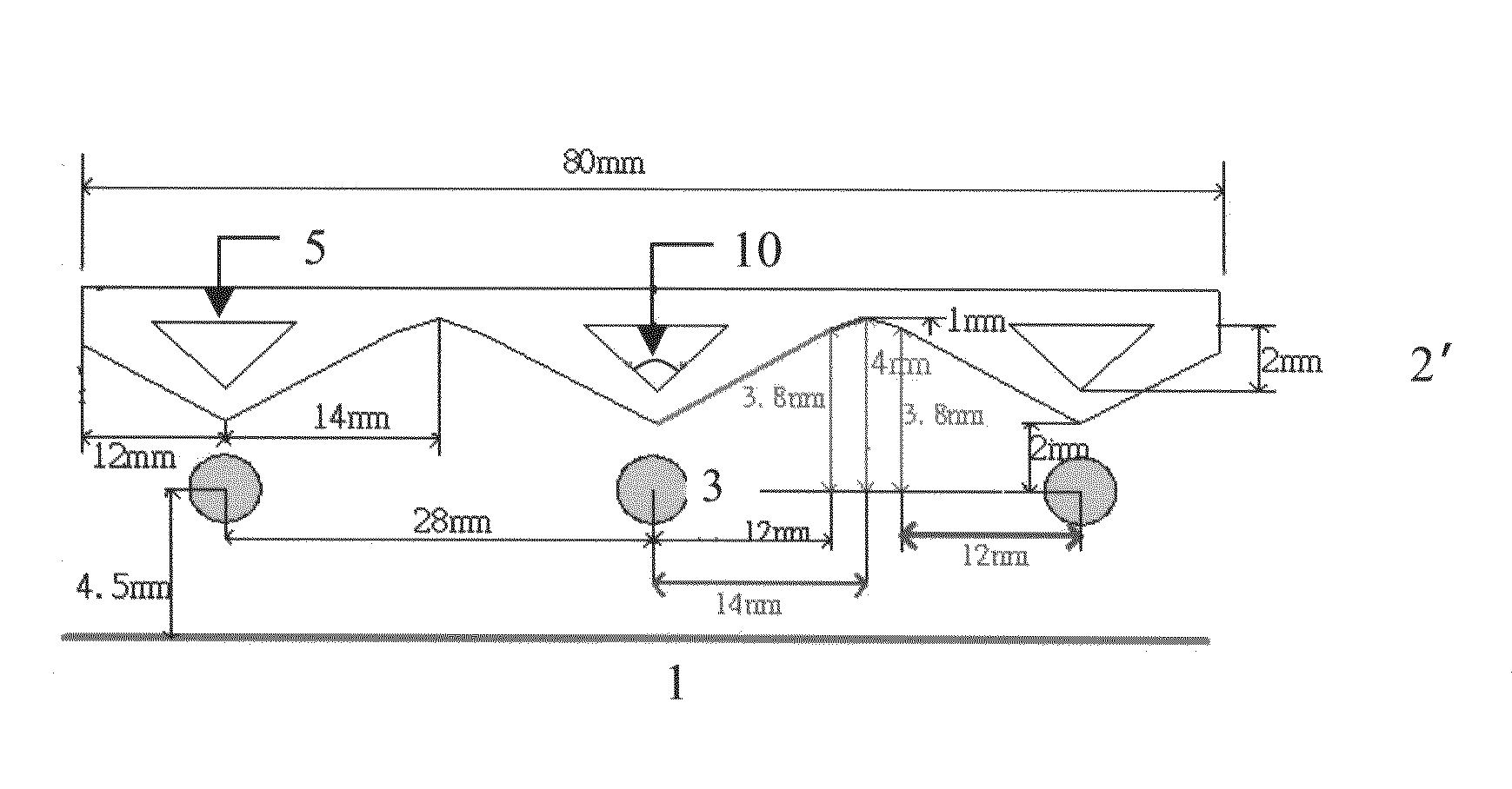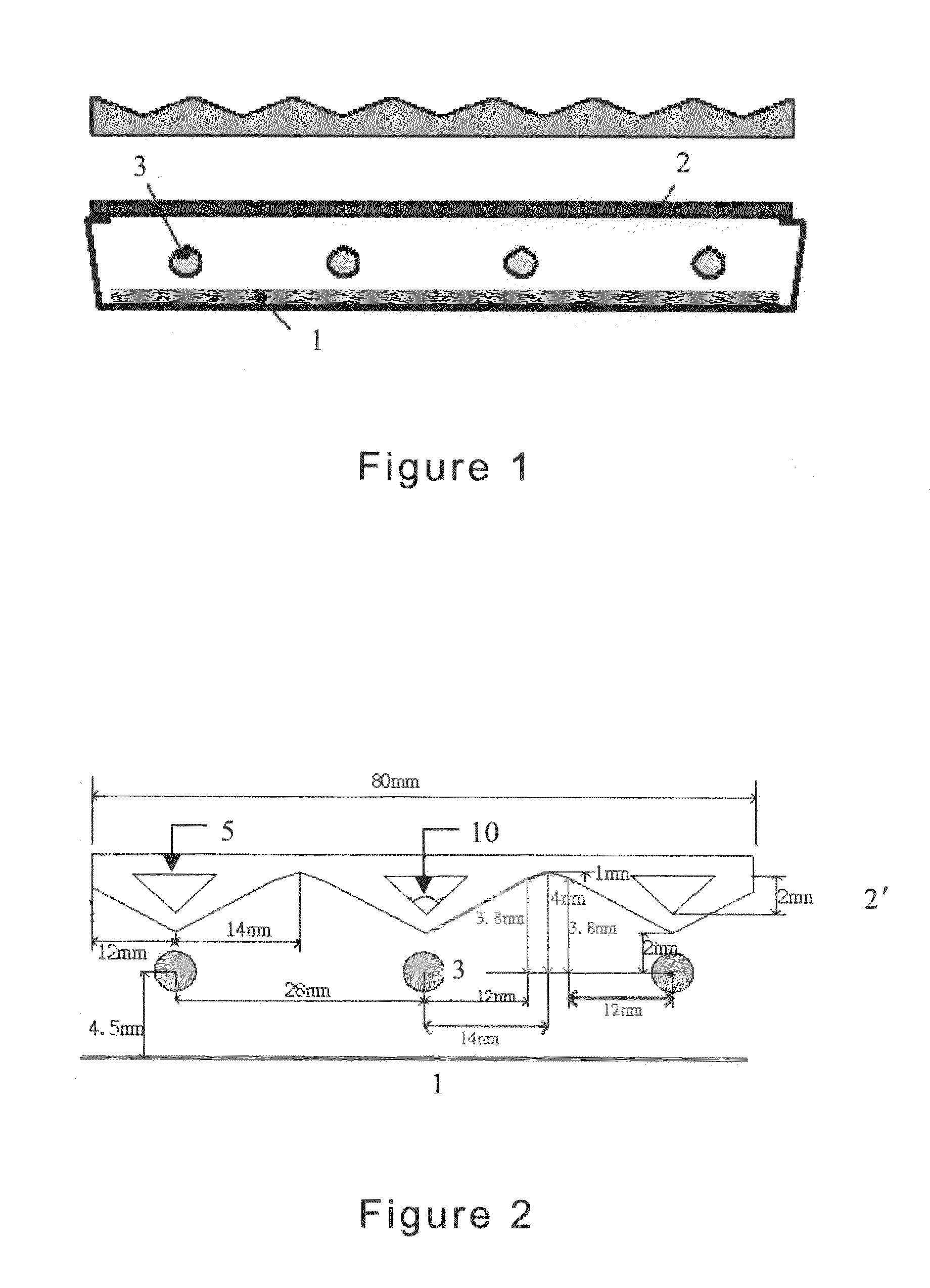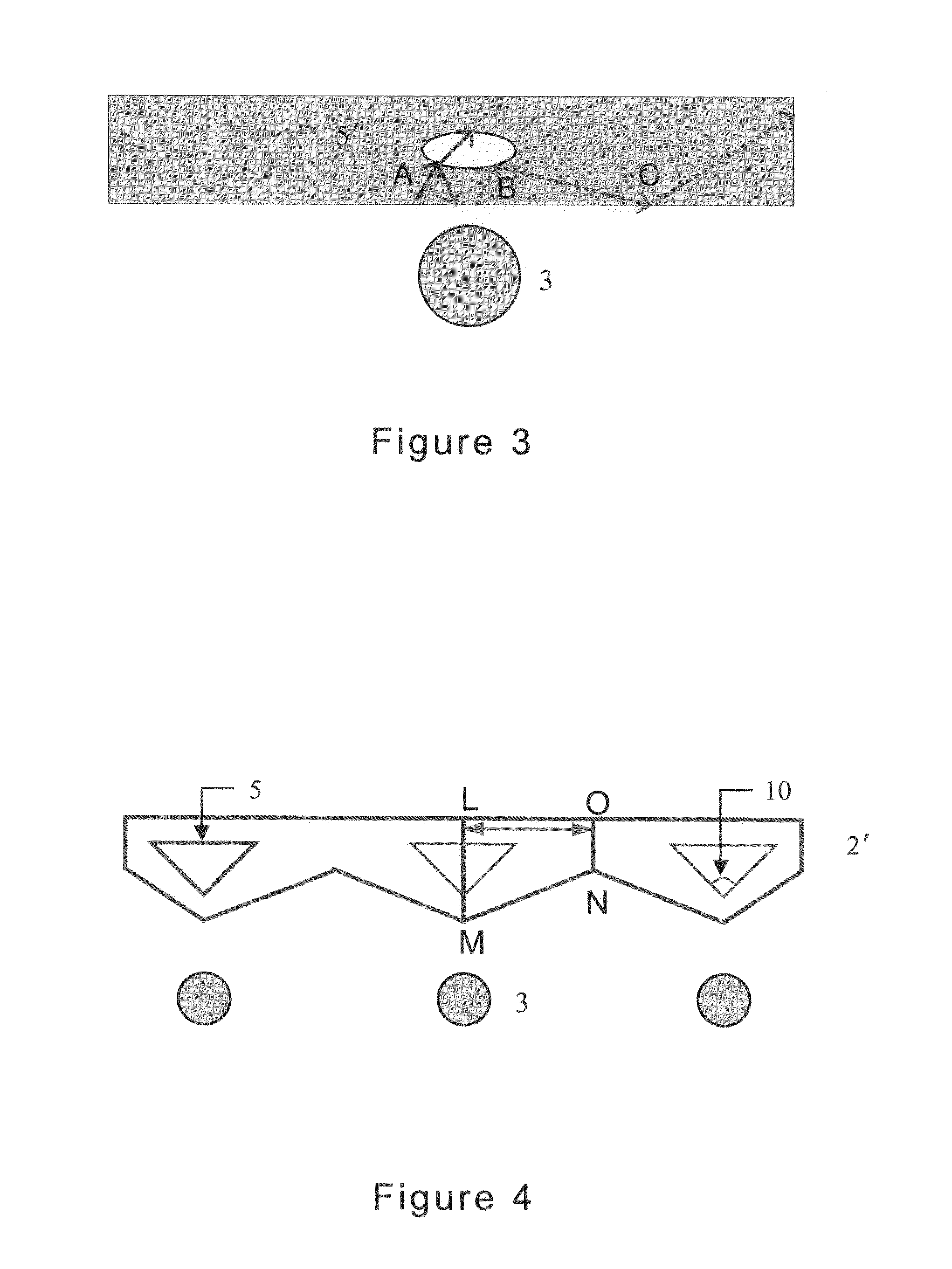Bottom lighting backlight module having uniform illumination and process for manufacturing the same
a backlight module and uniform illumination technology, applied in the field of bottom lighting backlight modules, can solve the problems of increasing the cost in comparison to an edge lighting module, difficulty in reducing the thickness of the entire backlight module b>4/b> to less than 1 cm, and achieves the effect of less surface roughness, higher temperature endurance, and less heat dissipation problems
- Summary
- Abstract
- Description
- Claims
- Application Information
AI Technical Summary
Benefits of technology
Problems solved by technology
Method used
Image
Examples
first embodiment
[0015]FIG. 6 shows the simulation result obtained from a parallel plate made of PC. The brightness evenness obtained on the detection face 1 located on YZ plane is only 30% with the maximum flux of about 0.206 Flux / mm2, while almost no light is detected on the detection face 2 located on YZ plane which means no light is redirected to dark area.
second embodiment
Diffusion Sheet Made of PC with Triangular Excavated Structure
[0016]FIG. 7 shows the simulation result similar to FIG. 6 using a diffusion sheet made of PC with triangular excavated structure. The brightness evenness obtained on the detection face 1 is about 43% with the maximum flux of about 0.114 Flux / mm2, while the maximum flux of about 1.7 Flux / mm2 is obtained on the detection face 2 which means more lights are redirected to dark area.
third embodiment
Diffusion Sheet Made of PC with Triangular Excavated Structure
[0017]Change the apex angle 10 in FIG. 8a to 120 degree. The brightness evenness obtained on the detection face 1 is about 95% with the maximum flux of about 0.102 Flux / mm2, while the maximum flux of about 1.38 Flux / mm2 is obtained on the detection face 2 which means less lights are redirected to dark area in comparison to the case of FIG. 7.
PUM
 Login to View More
Login to View More Abstract
Description
Claims
Application Information
 Login to View More
Login to View More - R&D
- Intellectual Property
- Life Sciences
- Materials
- Tech Scout
- Unparalleled Data Quality
- Higher Quality Content
- 60% Fewer Hallucinations
Browse by: Latest US Patents, China's latest patents, Technical Efficacy Thesaurus, Application Domain, Technology Topic, Popular Technical Reports.
© 2025 PatSnap. All rights reserved.Legal|Privacy policy|Modern Slavery Act Transparency Statement|Sitemap|About US| Contact US: help@patsnap.com



